Zhejiang Province, with its winding rivers, hidden temples, and farms nestled into its many foothills, is an incredibly picturesque area in China. About 70% of this province is covered in vibrantly green, fertile mountains. It’s temperate climate caps off the ideal conditions for agriculture to flourish, most importantly tea. Zhejiang currently ranks as the top green tea producer in China. Songyang County in Lishui, Zhejiang is hailed as one of the best growers of tea, particularly the Yinghou or Silver Monkey Paw Tea. Songyang is also is touted as a scenic country getaway for those weary of the busy hubbub of city life.
Songyang is one of Lishui’s nine counties in Zhejiang and focuses most of its industry in producing high-quality teas. Over 7,500 hectares (about 29 square miles) of the county is devoted solely to the cultivation of tea fields, with more being created every day. A group of friends and I went on an excursion into Zhejiang’s rural countryside in search of these famous tea plantations to experience the hype for ourselves.
Damunshan 大木山
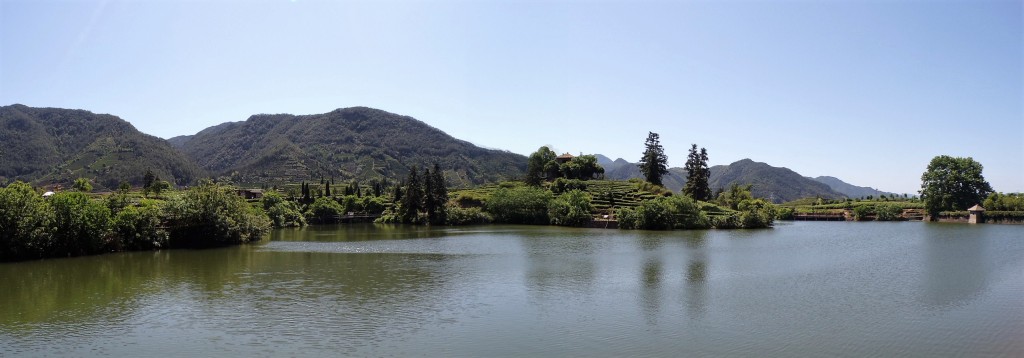
We drove about an hour to Songyang’s Xinxing Town, then another twenty to thirty minutes to get to Damunshan (大木山), a tea garden in the Hengxi Village. Hengxi is among dozens of villages in Songyang that the Chinese government is pumping money into to restore and/or renovate historic buildings. The Beijing-based China Foundation for Cultural Heritage Conservation has appointed 40 million kuai for the restoration of about 50 villages in the area. This allows for centuries-old unused ancestral houses and other dilapidated structures to be given a new lease on life in the form of restaurants, cafes, hostels, and homestays, making this area a big draw to professional millennials (like us!) seeking a bucolic escape – and how!

After parking at a random farmer’s house, our group took our time meandering about off the main road. The sight that met us at Damunshan felt like looking into a gorgeous, serene dreamscape. Ranks of neatly trimmed tea bushes stretched across rolling hills in a sea of green set amidst a backdrop of imposing mountains and clear blue skies. Breezes wafted, sending gentle ripples across the water of a lake. What probably struck most was the overall sense of calm – I forget how noisy living in the city can be.
It felt amazing to be out surrounded by tea fields in the middle of nowhere!

Damunshan (大木山骑行茶园) is a “Riding Tea Garden,” China’s largest cycling tea garden. For 30 kuai, one may rent a mountain bike for two hours from the visitor’s center and cycle up and down winding, sometimes narrow, dirt or concrete paths through the fields and around the surrounding hillsides. 8.3 km of the track is designated for “leisure and fitness cycling” while another 7 km is for professionals.

Be forewarned that China has less safety standards than in the West: often, bikes are given without care to the bike’s conditions – the gears and/or brakes may be iffy, and there will probably be no helmets provided.


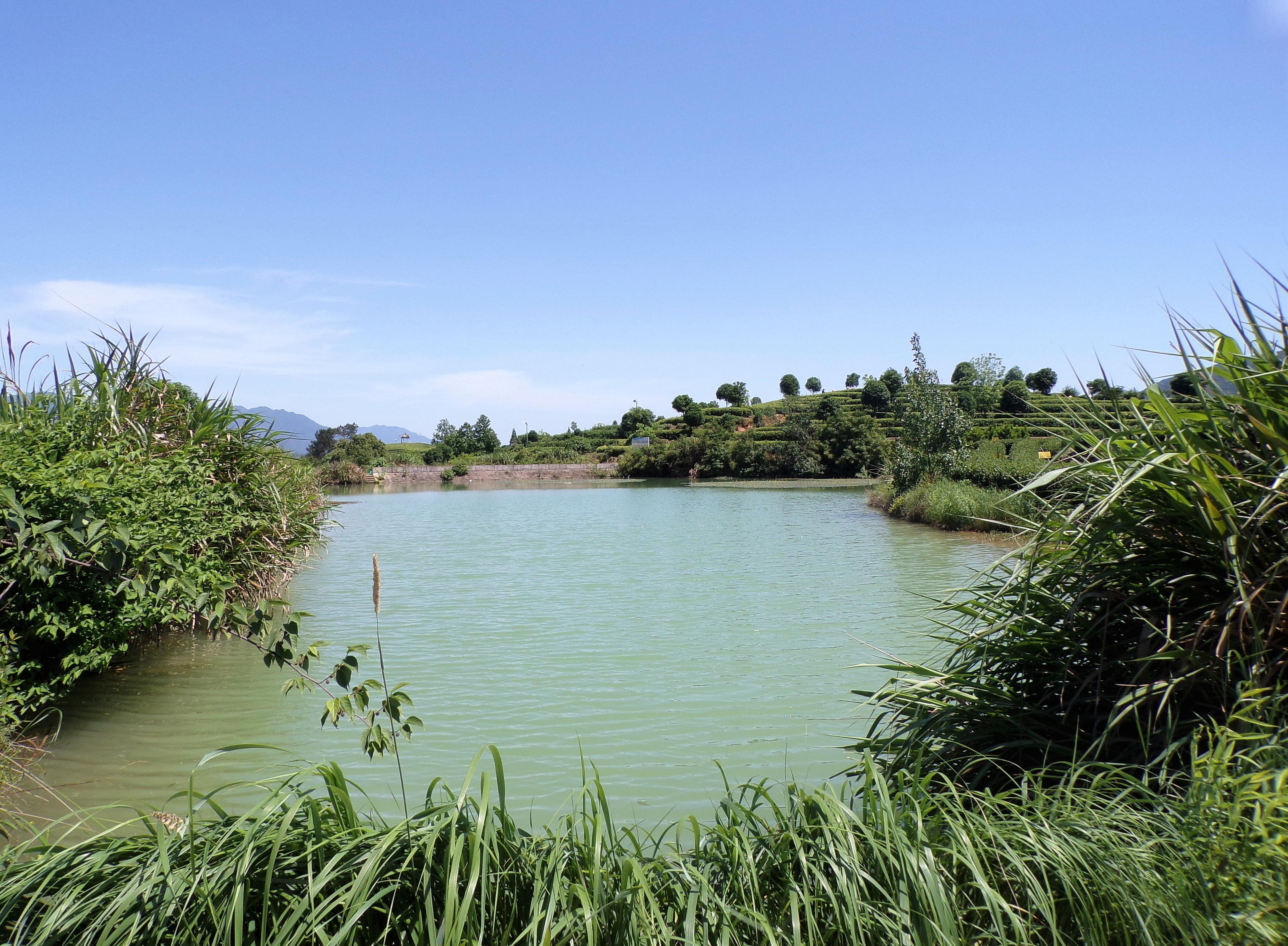
For those less cycling-inclined, there’s also a sightseeing electric car for 200 kuai that can be chartered for a group of seven people or less. Our little group followed one of the dirt bike paths in a tea field up to some steep, crumbling packed-earth stairs, took a few photos, and then set off in search of the central tea house.

Damunshan used to be called tomb mountain 大墓山 as there are still some family tombs hidden among the terraces
I didn’t know this while we were there, but Damunshan’s tea house is apparently renowned for its architecture. It was designed by a Chinese architect named, Xu Tiantian, who had studied in the States. It features double-tall windows facing a reservoir, skylights, and beautiful sycamore trees. The tea house was even featured in the Forbes Magazine 2015 Architecture and Landscape section.
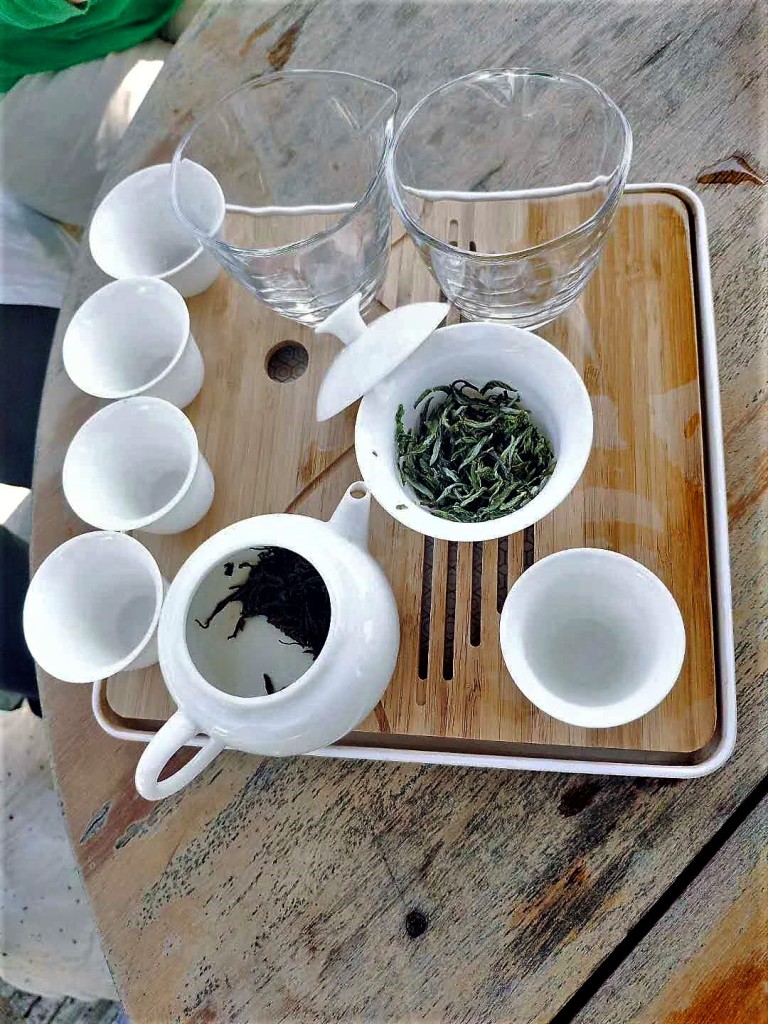
I find the ritual of drinking Chinese tea incredibly fascinating and calming. Chinese tea can be classified into six categories (green, black, yellow, oolong, pu-er and white) dependent on the planting and production methods. We chose two types, a black and the Silver Monkey Paw. Our friend, Oscar, took control of cleansing the tea cups with hot water and steeping the tea. Both teas were quite smooth and refreshing.
The Silver Monkey Paw Tea, Yinghou, is named after the shape of its dried tea leaves. The leaves curl with its tips stretched out like monkeys swinging over treetops. This tea first gained fame during the first West Lake International Expo in 1929. It won a first-class certificate, and has since then been renowned for having a “delicate and soothing” taste.


A random funny story – We had also ordered fluffy waffles from the tea house and sat outside along the veranda by the water. Our waitress wanted to know if we wanted our waffles coated in ketchup! Umm…no? It’s even a strange request by Chinese standards according to my friend, Doris. This was surprising as Chinese are known for all sorts of uncommon condiments (mayo on salad, anyone?).
We vehemently told her we wanted ice cream, which she brought out in a separate bowl without spoons. She told us that once the strawberry ice cream melted a bit, we should dip our waffles in it. It being so hot and sunny, we all promptly jumped on the ice cream, using pieces of the dense waffles as a spoon.





Following this, my friends Dani, Aga, and I wandered through some of the fields, watching the farmers move about tending to their bushes. It was such a lovely sunny day, made even better by the lack of tourists. I was amazed that for this much tea, there seemed to be so few workers! I learned later that there is a shortage of farmers for the ever-expanding tea fields. To tackle the issue, migrant tea pickers are brought in each harvest season from other provinces like Guizhou, Yunnan, Jiangxi and Hubei.
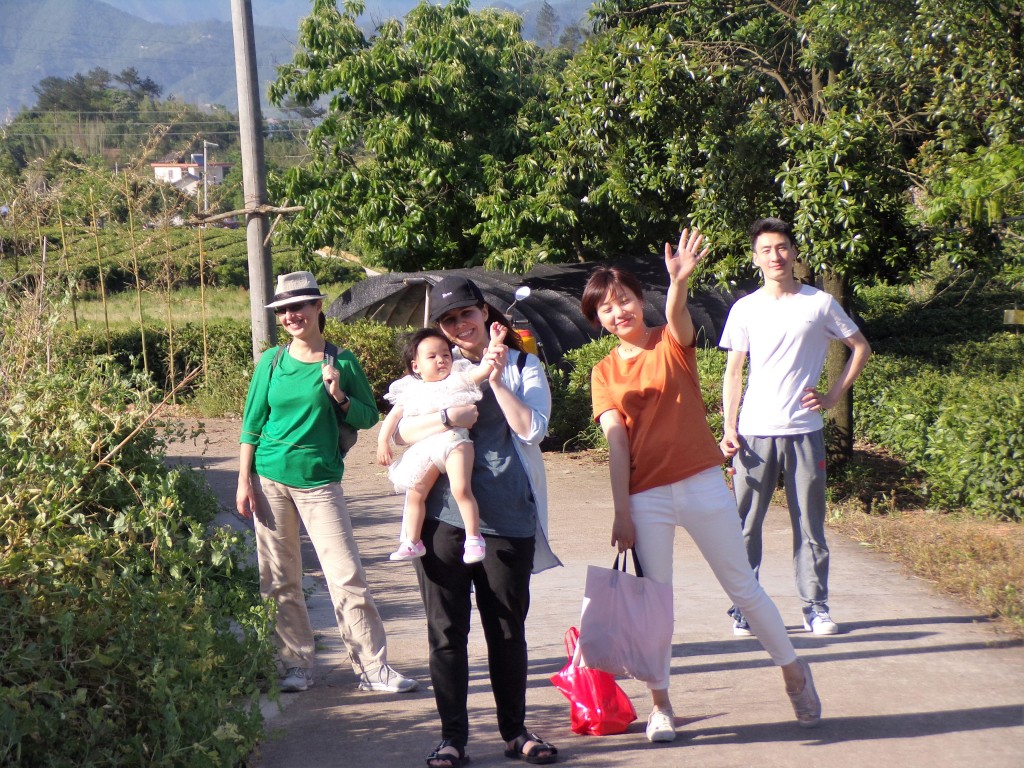
Songyang’s Old Street

We’re here for the “Fantastic Lifestyle”
We spent the latter part of the afternoon visiting Songyang’s Old Street, the ancient center of Xiping Town. The street is more than 300 meters long, with mud-roofed buildings on either side featuring the traditional wooden architecture dating from parts of the Ming and Qing Dynasties. Entrance to the museum and historic mansion that once belonged to a prominent family (amazing that it survived the country’s upheavals) are free.
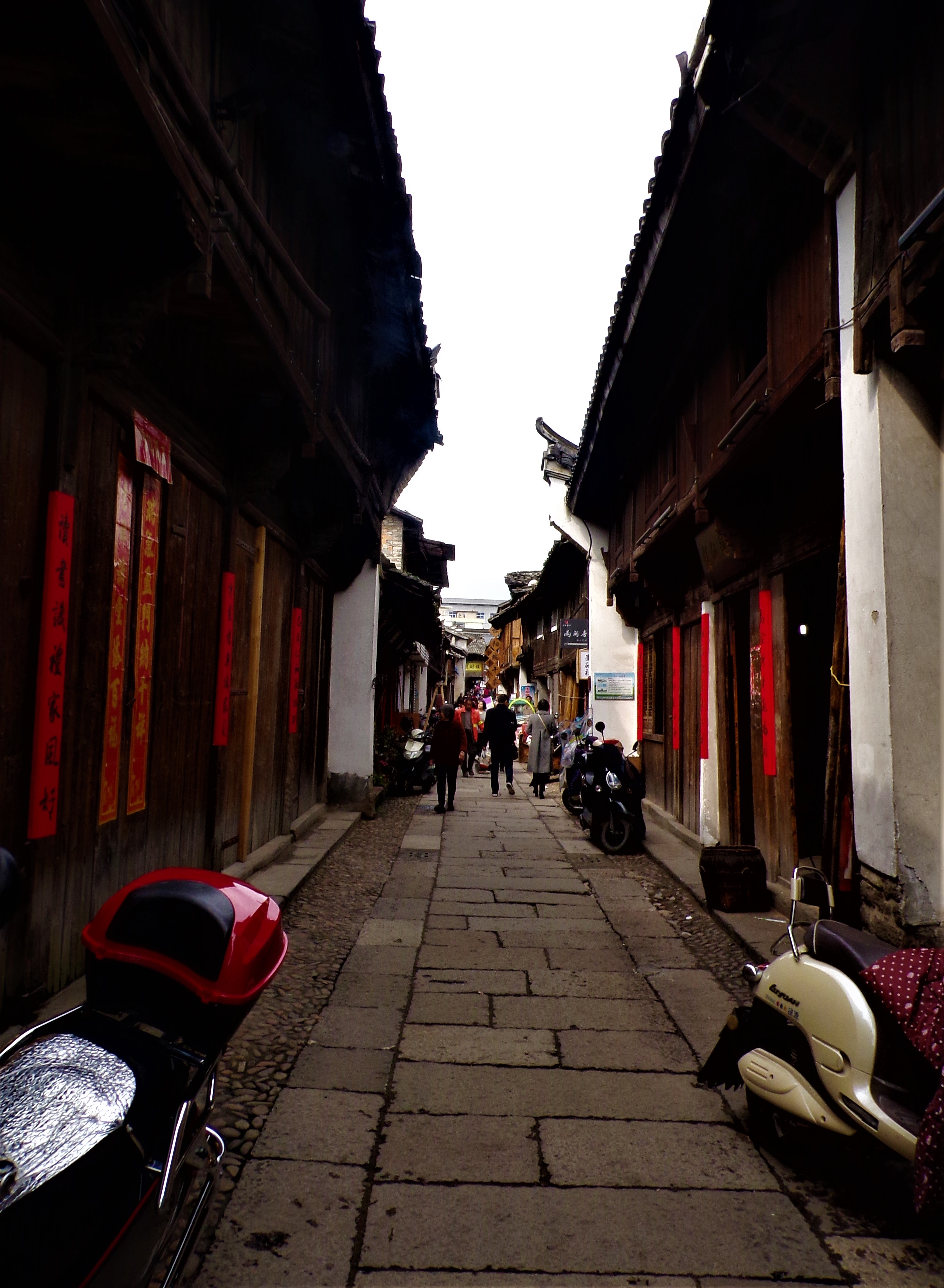
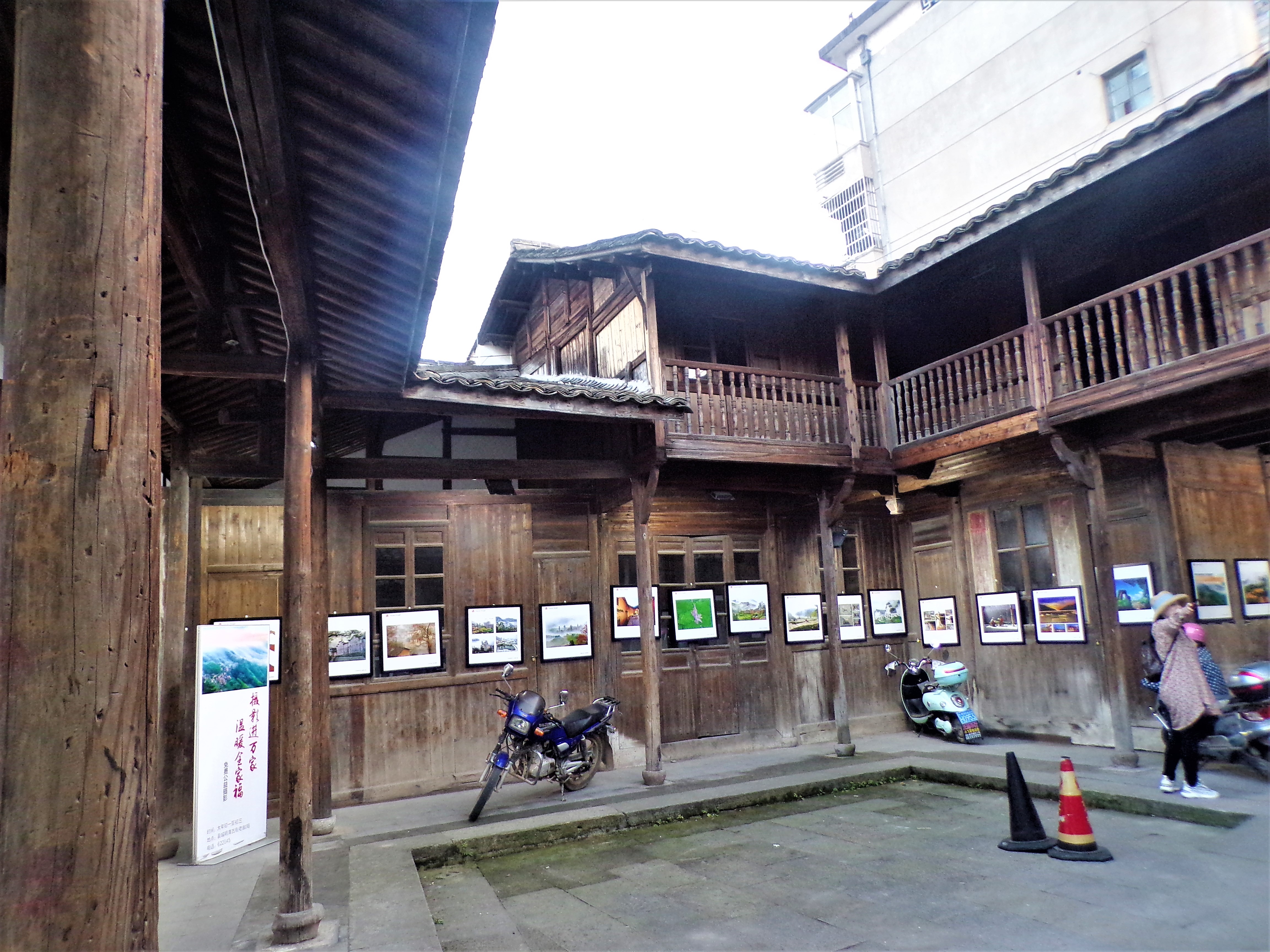

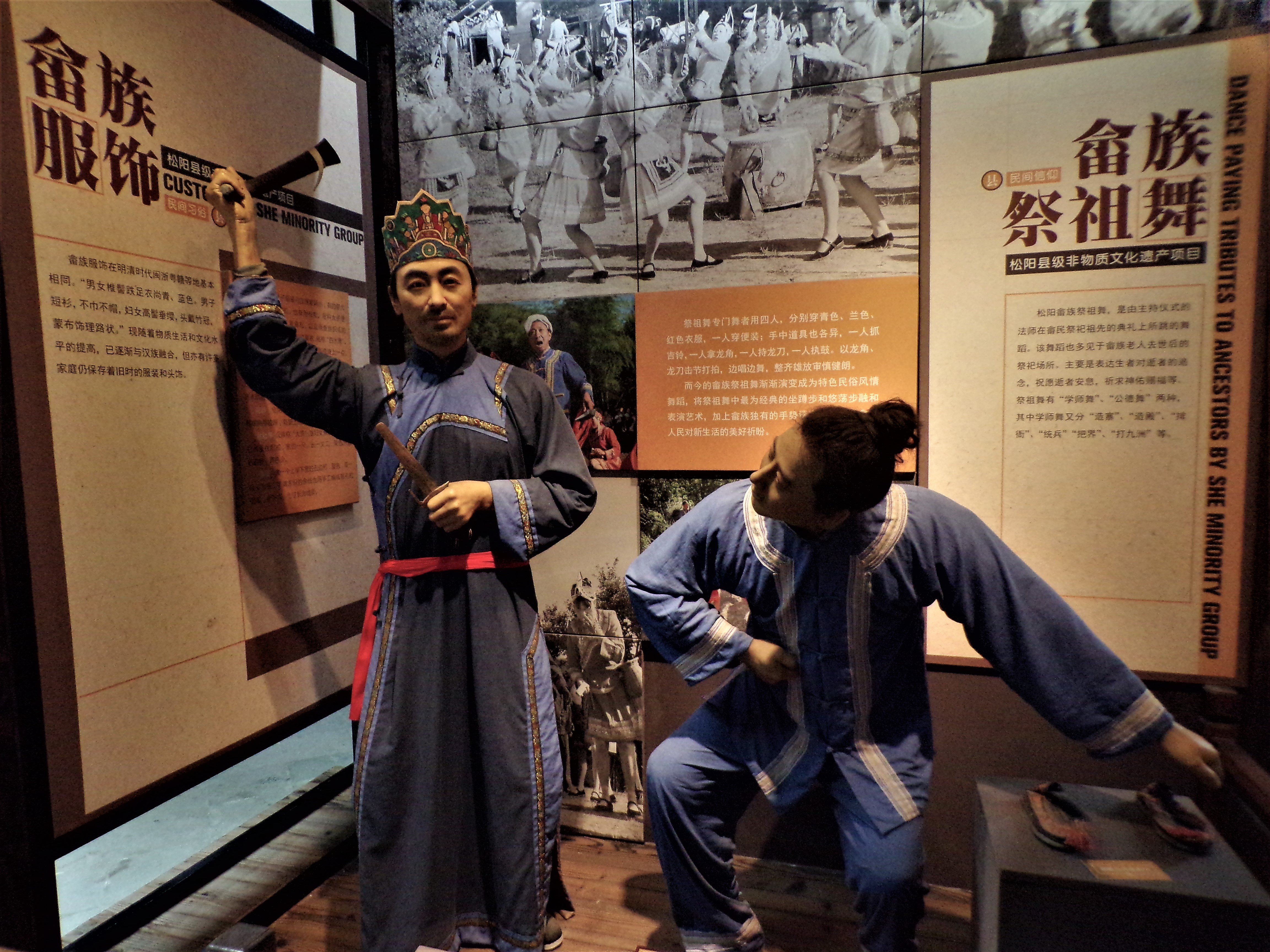


I love coming here because it feels like an authentic old street – not just the usual commercialized kitschy stuff for tourists, but you can see that real people live here and witness them go about their day. In the alleys are a wide variety of shops including Chinese medicine, pottery, iron tools, traditional clothing, and barber shops.

Walking down Old Street 

Tea for sale 
Noodle demonstration 
Famous hand-pulled noodles
Amazingly, no one hawks their wares at you, although there are lots of traditional crafts and live cooking demonstrations along the street for the enjoyment of passersby. We ended the night with bowl of noodles for dinner from the famous Baixian noodle restaurant, the oldest restaurant in Songyang.

Even the dogs here are laid-back!


I’ve been to China a few times in the past but haven’t had a chance to make it out here yet–it’d be awesome to go someday to visit!
LikeLiked by 1 person
The tea fields look quite serene. I have never been to tea fields but the terracing reminds me of rice fields I have seen in Indonesia.
LikeLiked by 1 person
Thank you for this post! I became curious about China and this looks like a great spot to consider. I’ll save this for later 🙂
LikeLiked by 1 person
China’s such a huge, diverse country! There’s loads to see and do 😀 Thanks for stopping by!
LikeLike
This looks amazing. I never went here in my two years in China, and now I feel like I’m missing it and want to go back. It looks so beautiful and peaceful. I love the remote areas of China that people don’t think of visiting as much as the busier big cities.
LikeLiked by 1 person
Yes! I’m a big proponent of visiting the countrysides. I definitely agree that there’s so much more to see outside of bigger cities.
LikeLiked by 1 person
What a beautiful region! I visited China a few years back and loved it but I’m bummed I didn’t make it here. It wasn’t until China that l learned and became the biggest fan of tea. Next time I’d love to visit this area especially for the tea!
LikeLiked by 1 person
Yes, the tea is so good!! There are lots of other tea fields too in different regions, this was just the closest one to where I was living at the time in Zhejiang.
LikeLike
This looks amazing! I would love to visit. I also don’t think I ever thought about using waffles as a spoon for ice cream. I think you might be on to something!
LikeLiked by 1 person
The tea terraces look absolutely STUNNING, I would love to see them in person. I’ll definitely be adding Songyang to my China itinerary when I finally make it there!
LikeLiked by 1 person
What a beautiful location! This would be an awesome place to travel with kids too!
LikeLiked by 1 person
For sure! It’s a really safe and gorgeous area!
LikeLike
It looks so gorgeous there!! And sounds like it was an incredible experience!
LikeLiked by 1 person
What a beautiful area! I would love to cycle around this stunning scenery…but yeah, maybe hold the ketchup for the waffles!! Dipping them into ice cream sounds far nicer!
LikeLiked by 1 person
Haha, icecream for sure!
LikeLiked by 1 person